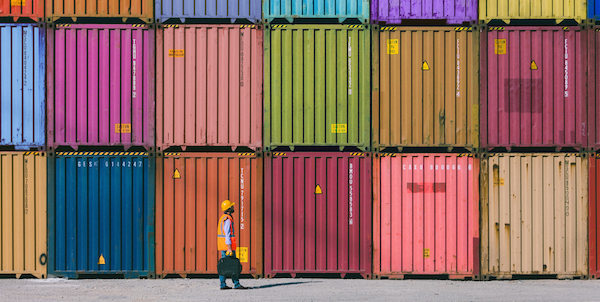
With the recent tariffs going into effect, it has sparked the discussion about regulations for vehicle replacement parts to keep some imported auto parts off the market. Most people think that with a stroke of a pen dangerous and sub-standard parts could be banned and parts quality will be improved overnight. But, what standards should be applied? Who should do the testing? This is where things get tricky.
For a technician, nothing is worse than ordering a part and finding out that it doesn’t fit or perform like the original. Can standards and regulations prevent this from happening?
The only mandated protection is a system that tracks defective products that might be in or already sold by the supply chain. These NHTSA issues can be viewed at www.nhtsa.gov/recalls under the “equipment” search. These recalls are usually issued after someone has been injured or there is a potential safety concern for the public at large. Unfortunately, NHTSA recalls do not prevent bad parts from making it onto cars and trucks in the first place.
What About Product Testing?
It is impossible to develop testing standards that can be applied to all the parts on a vehicle. NHTSA gets around this problem on new cars and trucks by developing “technology-neutral” standards. Regulations are based around a stopping distance, miles-per-gallon requirement or emissions levels.
Technology-neutral standards do not mandate a specific technology, device or manufacturer to meet a standard. Also, technology-neutral testing must be performed on a complete vehicle, not a single part.
Technology-neutral regulations are great for the free market and innovation. If an engineer or company can come up with a better technology to help a vehicle get a few more miles out of a gallon of gas, it can be included for the next model year.
But, technology-neutral regulations are not good for replacement parts. Why? Because you need a vehicle to test an individual part. This is not practical for the aftermarket where the average age of the vehicle is almost 12 years old. If a parts company wanted to make a part for an older truck that might be in the 8-year-old sweet spot, it would need a truck of that model year. This is not practical.
Why not test just the parts? Every vehicle has an average of 30,000 parts. While the oil, brake fluid and maybe the headlights have federal standards to meet, making rules for some parts is not practical due to the diversity of makes and models on the roads.
Existing Brake Testing
For brakes on new vehicles, there are Federal Motor Vehicle Safety Standards (FMVSS) 105, 126 and 135, which are issued by the National Highway Traffic & Safety Administration/Department of Transportation (NHTSA/DOT), that technically apply to a complete vehicle. They do not apply to aftermarket replacement brake linings. So, aftermarket brake linings are unregulated and do not have to meet the same FMVSS standards as OEM brake linings.
FMVSS 135 says all vehicles under 10,000 lbs. gross vehicle weight (GVW), except motorcycles, must be capable of stopping within a distance of no more than 230 feet (70 meters) from 62 mph (100 km/h) with cold brakes (under 212° F or 100° C), and with no more pedal effort than 368 ft.-lbs. (500 N).
The FMVSS 135 standard also specifies a required stopping distance for vehicles should the power brakes fail (no power assist), or if one of the two hydraulic circuits fails. Under these conditions, the maximum stopping distance from 62 mph (100 km/h) is not to exceed 551 feet (168 meters) with a maximum pedal effort of no more than 368 ft.-lbs. (500 N). FMVSS 135 also has a stopping requirement in the event of an anti-lock brake system (ABS) failure. The rules require the stopping distance not to exceed 279 feet (85 meters).
There also is a hot performance-stopping requirement for fade resistance. With the brakes hot, the maximum stopping distance for the second of two back-to-back panic stops is not to exceed 292 ft. (89 meters) with the same pedal effort as before (368 ft.-lbs., or 500 N).
If an aftermarket manufacturer wants to make the claim that it meets or exceeds OEM standards, it would need a complete vehicle and a proving grounds. But, there is a shortcut.
Brake inertia dynamometers can simulate FMVSS tests on specific vehicle platforms. One standard that some aftermarket companies use is SAE J2430. This test is a single-ended brake dynamometer test that mimics FMVSS 105 or 135 if the company has the data for a platform. Being able to simulate these tests and standards on a dynamometer is more economical. Also, when you consider that the SAE J2430 standard uses more than 300 stops for the results, you can see why dynamometer testing has its advantages.
Other brake dynamometer tests are performed by other manufacturers and some even use a dual-end dynamometer the can measure the balance of the front and rear friction materials.
The only problem with brake dynamometer testing is getting brake pad companies to adopt a single standard. Some feel that with one standard they might be lowering their reputation to their competition’s level, if they both meet the same standards.
What Protects Us Now?
In my 25 years of working on cars, I have seen parts companies and brands come and go. The one thing that drives the leaders to make high-quality parts is their reputation. They know that taking chances on a part that causes comebacks or an unhappy customer is toxic to the brand.
They also know that technicians are a long-term investment and if they betray a tech’s trust, it is almost impossible to gain it back.













